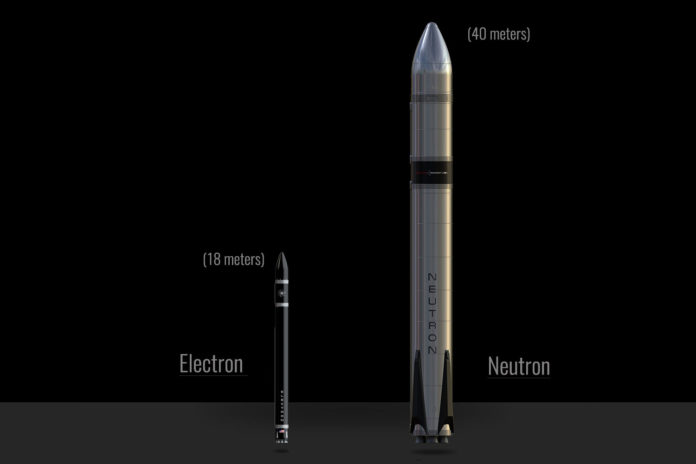The American aerospace company Rocket Lab has unveiled the plans for a larger rocket that can carry bigger payloads than its current reusable launch vehicle, the Electron. Named Neutron rocket, it is an advanced 8-ton payload class launch vehicle tailored for mega-constellations deployment, interplanetary missions, and human spaceflight.
At 40 meters (131 feet) tall with a 4.5-meter (14.7 ft) diameter, the Neutron rocket will be more than double the size of its predecessor. The medium-lift rocket will be capable of carrying 8,000 kg (8 metric tons) to low-Earth orbit compared to the Electron’s 300 kg (660 lb) capacity. Besides, it has a lift capacity of up to 2,000 kg to the Moon (2 metric tons) and 1,500 kg to Mars and Venus (1.5 metric tons). Neutron will transform space access for satellite constellations and provide a dependable, high-flight-rate dedicated launch solution for larger commercial and government payloads.
The main difference from Electron is that Neutron is initially created as a reusable one, and the return of the first stage will be implemented not with the help of parachutes, but in the classic way, proven by SpaceX – jet landing on an offshore platform.
According to the company’s plans, Neutron will feature a reusable first stage designed to land on an ocean platform, enabling a high launch cadence and decreased launch costs for customers.
The company notes that it estimates the reusable rocket will be capable of lifting 98% of all satellites forecast to launch through 2029. Initially designed for satellite payloads, Neutron will also be capable of International Space Station (ISS) resupply and human spaceflight missions.
Neutron launches will take place from Virginia’s Mid-Atlantic Regional Spaceport located at the NASA Wallops Flight Facility. According to Rocket Lab, the first launch of the new rocket is scheduled for 2024.
